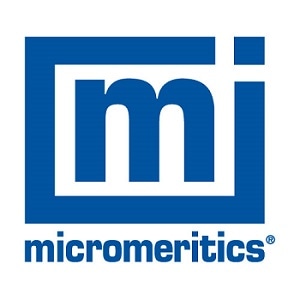Additive manufacturing, or 3D printing, is widely recognised as a new industrial revolution1 in the manufacture of components and products. There are, however, some issues that are not due to the technique but due to the inconsistency of the metal powders available as starting material.
Additive manufacturing (AM) or 3D printing involves1 the product being fabricated layer by layer from a computer-aided design (CAD) model. The manufacture of a metal object using ED printing can be accomplished in two simple alternating steps: These are:
- The deposition of a thin sheet of metal powder to form a powder bed
- Sintering to fuse the particles together using heat
What is special about Additive Manufacturing?
The advantages of AM for manufacturing existing products, include:
Reducing construction costs and the waste of materials2,3. The aerospace industry is a prime example where component manufacturing, has benefited to save on both fuel and material footprints of new aircraft. Advantages include
- A good way to encourage product innovation2,3,
- Allows intricate features to be created easily,
- Allows easy customization of products, which is attractive for the healthcare and medical device sectors
- The short production time is ideal for prototyping. This is particularly useful in the automotive, tooling and energy industries.
Facing the problems
Despite the benefits, metal AM has not yet been fully accepted in industrial production. The U.S. Department of Energy has highlighted improvements that could increase the use of AM across the manufacturing industry.
These include: surface quality, process reliability and part reproducibility2, which are all due to the quality of the metal powder starting material.
The National Institute of Standards and Technology (NIST) has identified a lack of standard methods for characterizing raw metal4, which could affect product quality.
Characterization of critical metal powder properties
The most important metal powder characteristics to consider include: particle size, shape, density, porosity, surface area and also topography:
Particle size
The particle size distribution of metal powder is essential to ensure there is uniform spread within the bed and the surface of the final product is not rough.
Micromeritics Saturn DigiSizeMI can determine the particle size distribution by using a laser diode and a charge-coupled device (CCD) detector for high sensitivity, resolution and reproducibility of the particle size measurement.
Particle Shape
Spherical particles are generally preferred as they pack together more efficiently than non- spherical particles for uniform powder bed density and a better quality final product.
The Micromeritics/Particulate Systems Particle Insight is a dynamic image analyzer able to record images of the particles in motion. Both particle size and up to 28 different shape parameters can be examined in real-time.
Density
There are a number of important density parameters that affect, for example, the sintering kinetics of the powder bed and the porosity and mechanical properties of the final product. Two good examples are the apparent density, describing the density of a porous material excluding any open pores, and the TAP density, which is a measure of how well the powder particles pack together.
These characteristics can be studied using the AccuPyc helium pycnometer and GeoPyc envelope/TAP density analyzer produced by Micromeritics. These instruments are non-destructive and are also able to show the total porosity of the metal powder when used together.
Porosity
The porosity of a metal powder bed is a large influence on the mechanical strength of the final product. Some applications, such as artificial bone implants, should be light and match the high porosity of the surrounding bone area while still maintaining mechanical strength.
The Micromeritics AutoPore V Series Mercury Porosimetry instrument is specifically designed to measure the porosity of metal powders. The instrument works by measuring the intrusion of mercury into the porous structure under controlled pressures. Porosity parameters for the sample, such as the pore size distribution, the total pore volume, the total pore surface area and the median pore diameter can be easily measured.
Surface Area
The amount of surface area per unit powder mass or specific surface area, determines how well the metal powder particles sinter.
The Micromeritics TriStar II Plus Gas Adsorption Instrument uses BET (Brunauer-Emmett-Teller) methodology to determine specific surface area by measuring the amount of physisorbed nitrogen or krypton gas on the surface of the powder, which is proportional to the specific surface area.
Surface Topography
Agglomeration of particles, surface roughness and irregularly shaped particles are some of the factors that impede efficient powder flow during sintering. Surface roughness also has a strong correlation with fatigue strength in the final metal object.
The Phenom ProX desktop scanning electron microscope (SEM) is an all-in-one imaging and X-ray analysis bench top system, which can both examine the surface topography and provide elemental composition analysis.
Micromeritics offer a range of instruments for the characterization of metal powders used in AM.
References and Further Reading
- Jeremy Rifkin. [2011] The Third Industrial Revolution: How Lateral Power Is Transforming Energy, the Economy, and the World. New York, United States.
- U.S. Department of Energy. [2015] Quadrennial Technology Review, Chapter 6: Additive Manufacturing.
- Royal Academy of Engineering. [2013] Additive manufacturing: opportunities and constraints.
- J. A. Slotwinski et al. [2014] Characterization of Metal Powders Used for Additive Manufacturing. Vol. 119, Journal of Research of the National Institute of Standards and Technology, Maryland, USA.

This information has been sourced, reviewed and adapted from materials provided by Micromeritics Instrument Corporation.
For more information on this source, please visit Micromeritics Instrument Corporation.